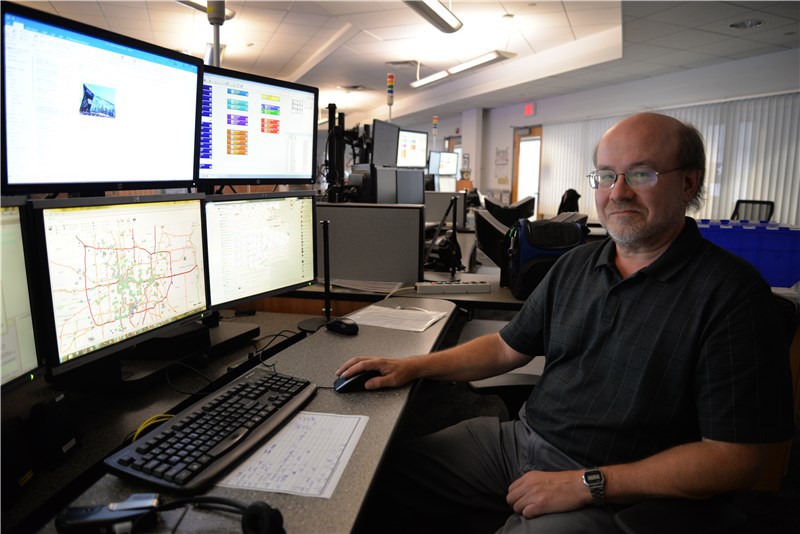
Most customers are unaware of all the behind-the-scenes technology that goes into catching a bus.
In fact, at the core of every rider experience, and the decisions we make to improve operational efficiency, is a computer system called TransitMaster.
Bus Operations has been using TransitMaster since 2002 to provide the entire agency with data that can be used to share real-time bus departures with customers, deploy extra buses when operators need support due to extreme weather, events or traffic, and write more accurate schedules.
And soon, an enhanced version of TransitMaster will enable buses to communicate location data more accurately and faster than ever before, adding up to significant gains for customers and staff.
Manager of Technology Systems Gary Nyberg and Transit Control Center (TCC) staff are systematically rolling out the TransitMaster upgrade over the next couple of months to all 950 buses. Each bus, which is equipped with an onboard cellular router, will communicate location data to TCC and NexTrip. NexTrip is the customer-facing system that feeds the mobile app, the website and the electronic schedule displays located at various bus stops and shelters.
Nyberg said when the upgrade is fully implemented by the end of 2017, buses will be able to send their location message every five to 10 seconds.
“That’s a huge improvement from the current 30 to 60 seconds,” Nyberg said. “It enhances a customer’s experience by improving NexTrip prediction accuracy and reliability, and therefore, their trust in Metro Transit.”
The latest TransitMaster improvements also provide the foundation for another key technology called Transit Signal Priority (TSP). TSP improves on-time performance because it allows a bus to request a longer green light or request that a red light be turned to green.
The TransitMaster upgrade also uses an embedded gyroscope sensor to improve accuracy when a bus is at the Mall of America, at Transit Centers, or whenever a bus is otherwise not receiving a valid GPS signal. A gyroscope is a small device that always maintains its direction and orientation to the earth, so whenever a bus’s GPS device loses its GPS signal, the gyroscope kicks in and continues to send accurate location data to TCC and NexTrip.
“Now we’ll know even more precisely where every bus is, everywhere, at all times,” Nyberg said. “That’s key, and it further improves the way we can manage our system and the accuracy of the data it provides to operations, planners, and to our customers.”
Other teams also rely on TransitMaster data and will benefit from the system upgrade.
Street Operations uses TransitMaster’s real-time information to better understand operators’ experience with delays. Service Development analyzes TransitMaster data to adjust schedules and routes. And Customer Relations staff use TransitMaster to respond to a customer who calls because their bus didn’t show up. With TransitMaster, Customer Relations staff can look at a live screen to see where the bus is in that moment and give the customer an answer in about 30 seconds.
“TransitMaster’s improvements are invisible to the customer, but they make us better able to deliver on the promise of service," Nyberg said.
Editor's Note: Nyberg’s leadership with TransitMaster and other important technology projects led to his TCC colleagues secretly nominating him for an Intelligent Transportation Systems (ITS) Minnesota award. In October, Nyberg was presented with a 2017 ITS Minnesota Public Sector Achievement Award in recognition for his outstanding contributions to the ITS community and for improving the efficiency of public transportation operations in Minnesota.